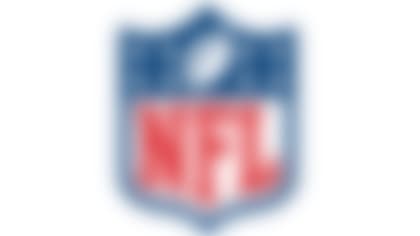As I was posing questions to an NFL general manager about the value of running backs prospects and the overall draft class at the position, I got a question boomeranged back toward me: How many teams, right now, really need a running back?
It took me a minute. Miami, obviously, because Ricky Williams and Ronnie Brown will become free agents. Washington and then maybe Seattle, at least in terms of needs a running back. Nobody's really dying for one, I guess.
Is Ingram like Emmitt?
Could Mark Ingram be the next Emmitt Smith? That might be a reach now, but NFL Network's Marshall Faulk says that Ingram reminds him of Smith. **More ...**
»
Blog:
Is Ingram special?
»
Mayock:
Opinion hasn't changed
»
Video:
Ingram's Combine workout
Then came the follow up to the GM's initial question: Doesn't just about every team have other positions to address which could be considered more important than running back?
Yes, yes and yes. In fact, just about every team needs help -- more help -- at other positions besides running back. Many teams have a value scale that makes the same determination. Running backs tend to come up on the back end of that scale for this draft.
"There might be some running backs good enough to go in the first round, but is the need stronger at left tackle, outside linebacker?" the GM asked. "Teams have to ask themselves, can we get through this round better without the running back or a left tackle?"
That line of thinking is a precursor to several GMs telling me that this also simply isn't a great draft class at the position. Alabama's Mark Ingram is considered the only running back likely to be selected in the first round -- he's widely projected to the Dolphins at No. 15 -- but from conversations I've had, it wouldn't be stunning if he slipped into the late first or even the second round.
That scenario could become reality because not only is Ingram not necessarily a game-changer like Adrian Peterson, but also because he's hampered by the trend of teams finding greater value at the position outside of the first round.
The Texans' Arian Foster, who went undrafted, was the NFL's leading rusher last season. The second-leading rusher, Jamaal Charles of Kansas City, was a third-round draft pick. Tampa Bay's LeGarrette Blount, a candidate for Offensive Rookie of the Year, went undrafted last spring. Cleveland's Peyton Hillis, who rushed for 1,177 yards and 11 touchdowns, was a seventh-round pick in 2008. Green Bay rookie James Starks, a sixth-round pick, emerged from injuries late in the season to become the Packers' main ball carrier during their Super Bowl run.
Conversely, past high picks from the past two drafts have only shown flashes due to injuries and inconsistency at a position many NFL evaluators say is one of the easiest to make an immediate impact. That list includes Knowshon Moreno (No. 12 overall), Donald Brown (27) and Beanie Wells (31) in the 2009 draft, and C.J. Spiller (No. 9), Ryan Mathews (12) and Jahvid Best (30) in 2010.
That's not to say that if there was a monster running back available, teams pass. All six of those running backs were taken in the first round (three each) the last two drafts.
That's just not the case with this group of prospects.
"In regards to the running back group, there are more second/companion and third/specialty running backs than [featured] running backs this year," another general manager said.
Besides Ingram (5-foot-9, 215 pounds), the top running backs include Kansas State's Daniel Thomas (6-0, 230), Illinois' Mikel LeShoure (6-0, 227), Oklahoma State's Kendall Hunter (5-7, 199), Jacquizz Rodgers of Oregon State (5-6, 196) and Virginia Tech's Ryan Williams (5-9, 212).
All are considered players who can contribute right away, but none are viewed as must-haves -- at least when it comes at the cost of a high draft pick. The one thing we do know is that someone no one is talking about is going to emerge from this group.
One GM said that he is intrigued by the amount of change-of-pace backs in this draft. Many of the prospects are coming from spread offensive systems, meaning they're adept at reading coverages, catching the ball and making plays in open space. This could be the perfect crop of players to find the complement to say, Peterson, Pierre Thomas or Frank Gore.
"You're seeing more scatback types than pounder, inline types," the GM said. "You can hit on running backs and wide receivers in the mid-rounds (that are) as good or better than all other positions."
While six running backs were taken in the first two rounds last season, the first being Spiller, six were also taken during the final two rounds, with Starks being the most notable. Only two were selected from rounds 3-5. In 2009, four running backs were taken in the first two rounds, including three in the first. Nine were chosen in the sixth and seventh rounds, combined. Nine also were taken rounds 3-5.
So what's clear is when it comes to running backs, things will go in cycles. In a year or two, some of the current workhorses will be wearing down, possibly at the same time that a sizeable group of running backs will be entering the draft. But this isn't that year.
Follow Steve Wyche on Twitter @wyche89



